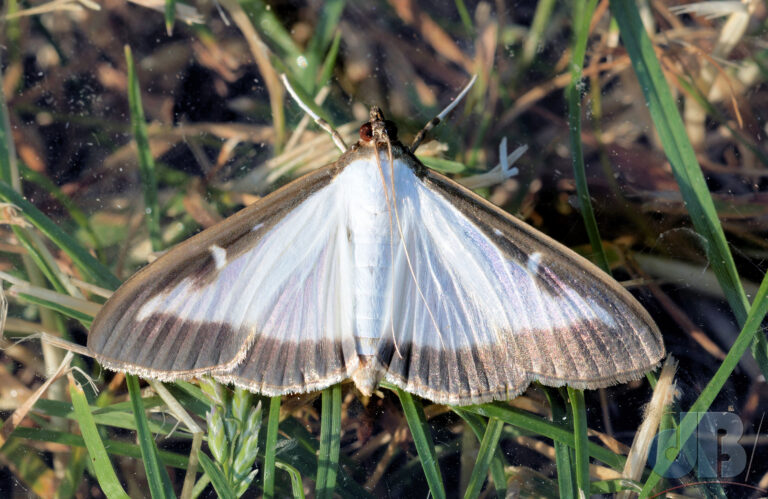This is a female Box-tree Moth. They were inadvertently brought into the UK in 2007 on imported, exotic Box plants. They are spreading rapidly and I see lots in Cottenham. I don’t think they’ve got as far north as Ely yet, but it’s only a matter of time.

The female lays her eggs on Box plants and her larvae will ravage the plant, you’ll see the damage pretty quickly. In their native environment the moths are kept in check somewhat by the ecosystem itself, but that doesn’t happen here. I have warned people not to plant Box here any more…it will be eaten…even established hedges will succumb. Please don’t spray pesticides around, pesticides are nasty, and I say that as a chemist. If you really want to try and save the hedge pick the caterpillars off by hand and “relocate” them…
You can buy a pheromone trap, a plastic flask, often green and yellow, and you put a little rubber bung in the top. The bung carries a tiny quantity of the female sex pheromone. You hang it near your beloved Box hedge and it attracts the males who are suckered into going into the trap thinking a female awaits…they can be drawn in from up to about ten miles away.
Sounds like a cunning plan, doesn’t it? But, think about it. The females are all over the place, and most likely on your hedge, to which they’re drawn because it’s their larval food plant (hence the name!). There may well not have been males in your street, but you’ve just put out a big chemical communication and invited them to the orgy…even if you catch a handful in the trap before they mate, chances are you won’t catch them all, and it only takes one for your local female to have a clutch of fertilised eggs ready to lay on your hedge. Her very hungry caterpillars will feast on it soon enough…
You can distinguish between the male and female moth, because the males have a tuft at the end of their body known as a hair pencil, it’s basically a diffuser for their own pheromones. There is also a melanic form of this species, which is dark brown-purple where this one is white.